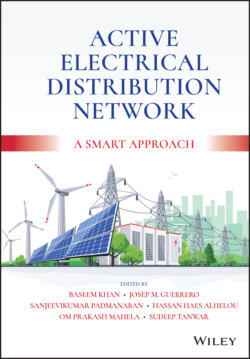Читать книгу Active Electrical Distribution Network - Группа авторов - Страница 62
3.3.1.5 Reactive Power Management
ОглавлениеThe renewable generation is connected to the distribution network at the low-voltage up to the high-voltage (HV) level. The insertion of this power can cause an objectionable voltage rise. Reactive power is also required to sustain and transfer this power in the transmission network. If distribution network operators (DNOs) regulate the reactive power locally, the distribution generators can contribute to reduce the many technical problems of the system. Reactive power production as well as its consumption, as required in the system by generators, urge the network operators to control operation of systems like voltages, stability, load angle, frequency, and power flow throughout the contributing system. Reactive power is one of the most important factors encountered for ensuring the smooth flow of the apparent power in the power lines. Generators are considered to be the prime source for reactive power and need to comply with the reactive power demand of the system and load. Due to many undesirable factors and inappropriate functioning of a few components or parts of the system, there may be evidence of an unrealistic flow of excessive reactive power in the transmission periphery, which may cause voltage instability and uneconomic network performance. Thus the reactive power control in a minor as well as a major power network is important, particularly for a steady load. However, the control of reactive power is difficult for network operators in large systems, where the system consists of long-length power lines and highly variable load because of widely and frequently varying meteorological conditions [20].
